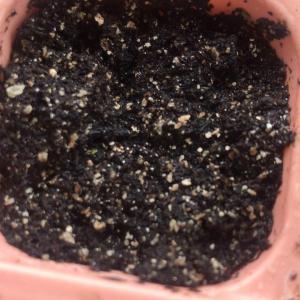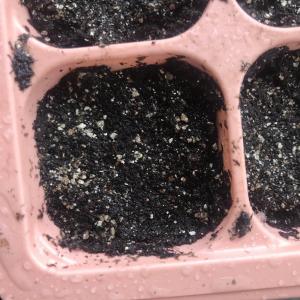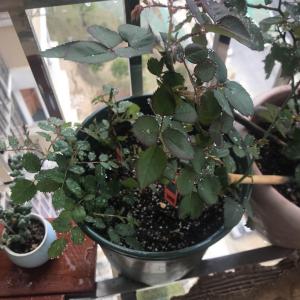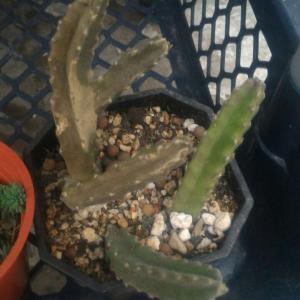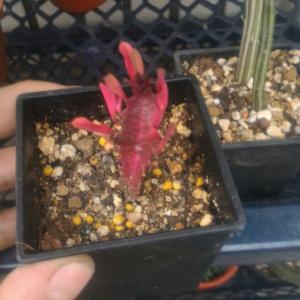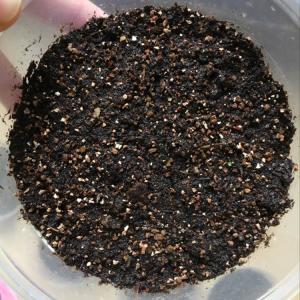文章
Miss Chen
2018年03月02日

Description: This wildflower is a biennial or short-lived perennial that forms a low rosette of basal leaves, from which one or more flowering stems develop that are 4-14" long. The basal leaves are ¾-2" long and ¼-½" across; they are oblanceolate to oblong-oblanceolate and pinnatifid (rarely without lobes). The terminal lobes are larger in size than the lateral lobes. The upper and lower surfaces of the basal leaves are grayish green and either short-hairy or glabrous. The stems are erect, ascending, or sprawling; they are usually short-hairy below and glabrous above, but sometimes glabrous throughout. These stems are either branched above or unbranched. The alternate leaves along each stem are ½-1½" long and up to ¼" across; they are linear-elliptic, linear-oblanceolate, or linear-oblong in shape with smooth margins (rarely lobed or sparsely dentate). The alternate leaves are grayish green, sessile, glabrous along their upper surfaces, and either glabrous or short-hairy along their lower surfaces.
Each upper stem terminates in a raceme of flowers. The flowers bloom near the apex of each raceme, while seedpods develop below. Each flower spans ¼" across or a little more, consisting of 4 white petals, 4 green sepals, several stamens, and a pistil with a short style. The sepals are lanceolate with blunt tips and glabrous. The slender pedicels are ¼-½" long and glabrous. The blooming period occurs from late spring to late-summer, lasting about 1-2 months. The flowers are replaced by narrowly cylindrical seedpods (siliques) that are ¾-1¾" long, ascending, glabrous, and somewhat flattened. Each seedpod contains a single row of seeds. The seeds are about 1.0 mm. long, ovoid in shape, and somewhat flattened; they do not possess winged margins of any significance. The root system consists of a taproot. This wildflower reproduces by reseeding itself.

Cultivation: The preference is full or partial sun, mesic to dry conditions, and soil that is sandy, gravelly, or rocky. Competition from taller ground vegetation is not tolerated.
Range & Habitat: The native Sand Cress is occasional in northern Illinois, while in the rest of the state it is absent (see Distribution Map). In addition to its range in North America, this species is also found in Eurasia. Habitats consist of upland sand prairies, upland gravel prairies, sand dunes near Lake Michigan, sandy upland savannas, sandy upland woodlands, dry areas along sandy paths, and rocky cliffs along rivers. Occasional wildfires are probably beneficial in maintaining populations of this species.

Faunal Associations: The nectar and pollen of the flowers attract small bees, Syrphid flies, and small butterflies, including the endangered Lycaeides melissa samuelis (Karner Blue). Other insects feed destructively on the foliage, flowers, and other parts of Sand Cress and other plants in similar genera (Arabis spp., Boechera spp., etc.). These species include the flea beetles Phyllotreta conjuncta and Phyllotreta punctulata, caterpillars of Plutella xylostella (Diamondback Moth), and caterpillars of the following Pierid butterflies: Anthocharis midea (Falcate Orangetip), Euchloe olympia (Olympia Marble), Pieris napi (Mustard White), and Pontia protodice (Checkered White). For North America, little is known about the interrelationships of Sand Cress with vertebrate animals.
Photographic Location: A sandy savanna and open sand dune at the Indiana Dunes State Park in NW Indiana.

Comments: Sand Cress (Arabidopsis lyrata) is somewhat variable across its range and several subspecies have been proposed that are differentiated by the shape of the basal leaves and hairiness of the foliage. It is similar in appearance to Arabidopsis thaliana (Mouse-Ear Cress), Cardamine hirsuta (Hairy Bitter Cress), and Cardamine parviflora arenicola (Small-Flowered Bitter Cress). Sand Cress has slightly larger and showier flowers (6-8 mm. across) than the preceding species. Other characteristics that are useful for identification purposes include: 1) whether or not the basal leaves are lobed, 2) whether or not the cauline leaves along the stems are lobed, 3) whether the siliques are erect, ascending, widely spreading, or drooping, and 4) the length of the siliques. A scientific synonym of Sand Cress is Arabis lyrata, while another common name of this species is Lyre-leaved Rock Cress.
Each upper stem terminates in a raceme of flowers. The flowers bloom near the apex of each raceme, while seedpods develop below. Each flower spans ¼" across or a little more, consisting of 4 white petals, 4 green sepals, several stamens, and a pistil with a short style. The sepals are lanceolate with blunt tips and glabrous. The slender pedicels are ¼-½" long and glabrous. The blooming period occurs from late spring to late-summer, lasting about 1-2 months. The flowers are replaced by narrowly cylindrical seedpods (siliques) that are ¾-1¾" long, ascending, glabrous, and somewhat flattened. Each seedpod contains a single row of seeds. The seeds are about 1.0 mm. long, ovoid in shape, and somewhat flattened; they do not possess winged margins of any significance. The root system consists of a taproot. This wildflower reproduces by reseeding itself.

Cultivation: The preference is full or partial sun, mesic to dry conditions, and soil that is sandy, gravelly, or rocky. Competition from taller ground vegetation is not tolerated.
Range & Habitat: The native Sand Cress is occasional in northern Illinois, while in the rest of the state it is absent (see Distribution Map). In addition to its range in North America, this species is also found in Eurasia. Habitats consist of upland sand prairies, upland gravel prairies, sand dunes near Lake Michigan, sandy upland savannas, sandy upland woodlands, dry areas along sandy paths, and rocky cliffs along rivers. Occasional wildfires are probably beneficial in maintaining populations of this species.

Faunal Associations: The nectar and pollen of the flowers attract small bees, Syrphid flies, and small butterflies, including the endangered Lycaeides melissa samuelis (Karner Blue). Other insects feed destructively on the foliage, flowers, and other parts of Sand Cress and other plants in similar genera (Arabis spp., Boechera spp., etc.). These species include the flea beetles Phyllotreta conjuncta and Phyllotreta punctulata, caterpillars of Plutella xylostella (Diamondback Moth), and caterpillars of the following Pierid butterflies: Anthocharis midea (Falcate Orangetip), Euchloe olympia (Olympia Marble), Pieris napi (Mustard White), and Pontia protodice (Checkered White). For North America, little is known about the interrelationships of Sand Cress with vertebrate animals.
Photographic Location: A sandy savanna and open sand dune at the Indiana Dunes State Park in NW Indiana.

Comments: Sand Cress (Arabidopsis lyrata) is somewhat variable across its range and several subspecies have been proposed that are differentiated by the shape of the basal leaves and hairiness of the foliage. It is similar in appearance to Arabidopsis thaliana (Mouse-Ear Cress), Cardamine hirsuta (Hairy Bitter Cress), and Cardamine parviflora arenicola (Small-Flowered Bitter Cress). Sand Cress has slightly larger and showier flowers (6-8 mm. across) than the preceding species. Other characteristics that are useful for identification purposes include: 1) whether or not the basal leaves are lobed, 2) whether or not the cauline leaves along the stems are lobed, 3) whether the siliques are erect, ascending, widely spreading, or drooping, and 4) the length of the siliques. A scientific synonym of Sand Cress is Arabis lyrata, while another common name of this species is Lyre-leaved Rock Cress.
0
0
文章
Miss Chen
2018年02月02日

Description: This perennial wildflower consists of a small rosette of basal leaves spanning 2-4" across, from which there develops a single stalk of flowerheads about 6-14" tall. The basal leaves are 1½-3" long and ½-¾" across (at least twice as long as across); they are oblong-elliptic to oblong-lanceolate in shape and crenate-serrate along their margins. The teeth along the margins have blunt tips and they vary in size from large and coarse to small and fine. The upper and lower surfaces of the basal leaves are medium green and glabrous (or nearly so); young basal leaves are sometimes sparsely hairy or white-mealy. The petioles of the basal leaves are about one-half the length of the blades and relatively narrow; they are light green to pale purple and glabrous. The central stalk is light green to purple and glabrous (or nearly so); sometimes it has sparse cobwebby hairs toward the bottom. Along this stalk, there are 2-4 alternate leaves; they are up to 2½" long and ½" across, becoming smaller as they ascend the stalk. The alternate leaves are narrowly lanceolate-oblong, pinnatifid with cleft lobes, and/or coarsely dentate along their margins; they are sessile. The upper and lower surfaces of the alternate leaves are medium green and glabrous.
The central stalk terminates in a flat-headed panicle of 5-30 flowerheads. Each daisy-like flowerhead spans about ½-¾" across, consisting of 40 or more disk florets and 8-13 ray florets (rarely none); the disk and ray florets are both perfect and fertile. The corollas of the disk florets are deep golden yellow, cylindrical in shape, and 5-lobed. The petaloid extensions of the ray florets are yellow and linear-oblong in shape. Around the base of each flowerhead, there are several phyllaries (floral bracts) in a single series; they are about ¼" long. These phyllaries are linear in shape, glabrous, and mostly light green, except toward their tips, where they become pale purple. The branches and peduncles of the inflorescence are light green to pale purple and glabrous; there are often tiny bractlets where they diverge. These bractlets are scale-like and purple. The blooming period occurs from mid-spring to early summer, lasting about 3 weeks. Afterwards, the florets are replaced by small achenes with sessile tufts of white hair. These achenes are 1-2 mm. long and bullet-shaped. The root system consists of a short crown of fibrous roots and occasional rhizomes or stolons. Occasionally, clonal colonies of plants are produced from the rhizomes or stolons.
Cultivation: The preference is full or partial sun, moist conditions, and soil containing loam, sandy loam, or rocky material. Most growth and development occurs during the spring. The basal leaves persist throughout the warmer months into winter.

Range & Habitat: The native Balsam Ragwort is occasional in the northern half of Illinois, becoming rare or absent in the southern half of the state (see Distribution Map). Habitats include moist sand prairies, prairie remnants along railroads, sedge meadows, streambanks, moist sandy savannas, open woodlands, and abandoned fields. Areas with low ground vegetation and some history of disturbance are preferred.
Faunal Associations: The nectar and pollen of the flowerheads attract a variety of small to medium-sized insects, including cuckoo bees (Nomada spp.), Halictid bees, Andrenid bees, Syrphid flies, small butterflies and skippers, and miscellaneous beetles. An Andrenid bee, Andrena gardineri, is a specialist pollinator (oligolege) of Packera spp. (ragworts). Some insects feed on the foliage or seeds of ragworts. These species include caterpillars of the moth Agonopterix canadensis (Canadian Agonopterix) and the seed bug Neacoryphus bicrucis. The foliage of ragworts is toxic to most mammalian herbivores, causing liver damage.
Photographic Location: Along a bike path through a sand prairie at the Indiana Dunes National Lakeshore in NW Indiana.

Comments: As compared to the similar Prairie Ragwort (Packera plattensis), this ragwort prefers habitats that are more moist. Balsam Ragwort differs from the former species by its glabrous foliage and more narrow basal leaves. The basal leaves of other perennial ragworts (Packera spp.) in Illinois have basal leaves that are more broad. However, across its range, Balsam Ragwort is rather variable, possibly because of hybridization with similar species. The perennial ragworts in Illinois all bloom during the spring or early summer and they have showy yellow flowerheads. The annual and biennial ragworts in Illinois are mostly from Eurasia and they have less showy flowerheads. An exception is the native Butterweed (Packera glabella). This latter species is usually taller than the perennial ragworts and it lacks their conspicuous basal leaves during the blooming period. A scientific synonym of Balsam Ragwort is Senecio pauperculus; another common name of this species is Northern Ragwort.
The central stalk terminates in a flat-headed panicle of 5-30 flowerheads. Each daisy-like flowerhead spans about ½-¾" across, consisting of 40 or more disk florets and 8-13 ray florets (rarely none); the disk and ray florets are both perfect and fertile. The corollas of the disk florets are deep golden yellow, cylindrical in shape, and 5-lobed. The petaloid extensions of the ray florets are yellow and linear-oblong in shape. Around the base of each flowerhead, there are several phyllaries (floral bracts) in a single series; they are about ¼" long. These phyllaries are linear in shape, glabrous, and mostly light green, except toward their tips, where they become pale purple. The branches and peduncles of the inflorescence are light green to pale purple and glabrous; there are often tiny bractlets where they diverge. These bractlets are scale-like and purple. The blooming period occurs from mid-spring to early summer, lasting about 3 weeks. Afterwards, the florets are replaced by small achenes with sessile tufts of white hair. These achenes are 1-2 mm. long and bullet-shaped. The root system consists of a short crown of fibrous roots and occasional rhizomes or stolons. Occasionally, clonal colonies of plants are produced from the rhizomes or stolons.
Cultivation: The preference is full or partial sun, moist conditions, and soil containing loam, sandy loam, or rocky material. Most growth and development occurs during the spring. The basal leaves persist throughout the warmer months into winter.

Range & Habitat: The native Balsam Ragwort is occasional in the northern half of Illinois, becoming rare or absent in the southern half of the state (see Distribution Map). Habitats include moist sand prairies, prairie remnants along railroads, sedge meadows, streambanks, moist sandy savannas, open woodlands, and abandoned fields. Areas with low ground vegetation and some history of disturbance are preferred.
Faunal Associations: The nectar and pollen of the flowerheads attract a variety of small to medium-sized insects, including cuckoo bees (Nomada spp.), Halictid bees, Andrenid bees, Syrphid flies, small butterflies and skippers, and miscellaneous beetles. An Andrenid bee, Andrena gardineri, is a specialist pollinator (oligolege) of Packera spp. (ragworts). Some insects feed on the foliage or seeds of ragworts. These species include caterpillars of the moth Agonopterix canadensis (Canadian Agonopterix) and the seed bug Neacoryphus bicrucis. The foliage of ragworts is toxic to most mammalian herbivores, causing liver damage.
Photographic Location: Along a bike path through a sand prairie at the Indiana Dunes National Lakeshore in NW Indiana.

Comments: As compared to the similar Prairie Ragwort (Packera plattensis), this ragwort prefers habitats that are more moist. Balsam Ragwort differs from the former species by its glabrous foliage and more narrow basal leaves. The basal leaves of other perennial ragworts (Packera spp.) in Illinois have basal leaves that are more broad. However, across its range, Balsam Ragwort is rather variable, possibly because of hybridization with similar species. The perennial ragworts in Illinois all bloom during the spring or early summer and they have showy yellow flowerheads. The annual and biennial ragworts in Illinois are mostly from Eurasia and they have less showy flowerheads. An exception is the native Butterweed (Packera glabella). This latter species is usually taller than the perennial ragworts and it lacks their conspicuous basal leaves during the blooming period. A scientific synonym of Balsam Ragwort is Senecio pauperculus; another common name of this species is Northern Ragwort.
0
0
文章
Miss Chen
2018年01月22日

Description: This herbaceous perennial plant produces one or more unbranched stems from its root system; these stems are 4-14" long, erect to ascending, whitish green, terete, and densely covered with appressed hairs. Alternate leaves occur along the entire length of each stem; they are ¾–2½" long, 2-6 mm. across, linear-oblong in shape, entire (toothless) along their margins, and sessile. The leaf blades have a tendency to become larger in size as they ascend up the stems. The upper leaf surface is grayish green and more or less covered with appressed hairs, while the lower leaf surface is whitish green and densely covered with appressed hairs. The leaves have prominent central veins.

Each mature stem terminates in a cluster of nearly sessile flowers. Each flower consists of a pale yellow to yellow corolla, a whitish green calyx with 5 linear teeth, 5 inserted stamens, and a pistil with a single style. The trumpet-shaped corolla is ¾–1¼" (18-32 mm.) long and 10-18 mm. across; it has 5 rounded spreading lobes, a narrowly cylindrical base, and a throat with a narrow opening. The lobes of the corolla are ruffled or fringed. The calyx (including its teeth) is up to 8 mm. long; it is more or less covered with appressed hairs. At the flower bases, there are small leafy bracts up to 8 mm. long; except for their small size, they resemble the leaves. The blooming period for these flowers occurs from late spring to early summer, lasting about 3 weeks. In addition to these showy flowers, this plant also produces small cleistogamous flowers later in the summer. These latter flowers are about ¼" long and inconspicuous; they are self-fertile. Afterwards, fertile flowers are replaced by small nutlets (4 nutlets per flower). Mature nutlets are 3–3.5 mm. long, ovoid in shape, light gray to white, shiny, and sparsely pitted. Individual nutlets are keeled along one side, while their bottoms are truncate and their apices are somewhat pointed. The root system consistsDistribution Map of a deep taproot. This plant reproduces by reseeding itself.
Cultivation: The preference is full sun, dry-mesic to dry conditions, and barren soil that is stony or sandy. Seed germination requires no pretreatment involving winter dormancy. As a perennial, this plant is moderately short-lived (typically surviving about 5 years), but its seeds are easier to germinate than many other native puccoons (Lithospermum spp.).
Range & Habitat: The native Fringed Puccoon occurs in northern and western Illinois, where it is uncommon. Illinois lies along the eastern range-limit of this species. Habitats include upland prairies, gravel prairies, sand prairies, hill prairies, sandy or rocky savannas, limestone glades, and pastures. Fringed Puccoon has a tendency to increase in response to light or moderate grazing by cattle. Occasional wildfires are probably beneficial by reducing competition from woody plants and by removing the accumulation of smothering debris from dead herbaceous plants. In Illinois, Fringed Puccoon is found in higher quality natural areas.
Faunal Associations: The structure of the large showy flowers indicates that they are cross-pollinated by butterflies, skippers, and possibly the Ruby-throated Hummingbird (in Illinois). A small number of insects are known to feed on the leaves, roots, and other parts of Fringed Puccoon and other puccoons (Lithospermum spp.) that are found in prairies. They include larvae of a long-horned beetle (Hemierana marginata ardens), larvae of a moth, the Gray Ethmia (Ethmia monticola fuscipedella), and larvae of a Sesiid moth (Carmenta mariona); see Yanega (1996), Powell (1973), and BugGuide (at bugguide.net) for more information. However, the range of the Sesiid moth extends eastward to Kansas and Nebraska; it has not been found in Illinois. Several polyphagous grasshoppers are known to feed occasionally on Fringed Puccoon. They include the Two-striped Grasshopper (Melanoplus bivittatus), Red-legged Grasshopper (Melanoplus femurrubrum), Yellowish Grasshopper (Melanoplus flavidus), and Gladston's Grasshopper (Melanoplus gladstoni); see Campbell et al. (1974), Brust et al. (2008), and Joern (1985) for more information.
Photographic Location: A sandy hill prairie in Cook County, Illinois. The photographs were taken by Bill Johnson (Copyright © 2014).
Comments: This is one of three puccoon species (Lithospermum spp.) in Illinois that inhabit prairies. They all produce showy flowers at about the same time each year that vary in color from pale yellow to orange-yellow. Fringed Puccoon can be distinguished from these other species by the fringed or ruffled lobes of its corolla and very narrow leaves (2-6 mm. across). It also produces small cleistogamous (self-fertile) flowers, unlike the others. Similar to other puccoons, a blue dye can be obtained from its roots.

Each mature stem terminates in a cluster of nearly sessile flowers. Each flower consists of a pale yellow to yellow corolla, a whitish green calyx with 5 linear teeth, 5 inserted stamens, and a pistil with a single style. The trumpet-shaped corolla is ¾–1¼" (18-32 mm.) long and 10-18 mm. across; it has 5 rounded spreading lobes, a narrowly cylindrical base, and a throat with a narrow opening. The lobes of the corolla are ruffled or fringed. The calyx (including its teeth) is up to 8 mm. long; it is more or less covered with appressed hairs. At the flower bases, there are small leafy bracts up to 8 mm. long; except for their small size, they resemble the leaves. The blooming period for these flowers occurs from late spring to early summer, lasting about 3 weeks. In addition to these showy flowers, this plant also produces small cleistogamous flowers later in the summer. These latter flowers are about ¼" long and inconspicuous; they are self-fertile. Afterwards, fertile flowers are replaced by small nutlets (4 nutlets per flower). Mature nutlets are 3–3.5 mm. long, ovoid in shape, light gray to white, shiny, and sparsely pitted. Individual nutlets are keeled along one side, while their bottoms are truncate and their apices are somewhat pointed. The root system consistsDistribution Map of a deep taproot. This plant reproduces by reseeding itself.
Cultivation: The preference is full sun, dry-mesic to dry conditions, and barren soil that is stony or sandy. Seed germination requires no pretreatment involving winter dormancy. As a perennial, this plant is moderately short-lived (typically surviving about 5 years), but its seeds are easier to germinate than many other native puccoons (Lithospermum spp.).
Range & Habitat: The native Fringed Puccoon occurs in northern and western Illinois, where it is uncommon. Illinois lies along the eastern range-limit of this species. Habitats include upland prairies, gravel prairies, sand prairies, hill prairies, sandy or rocky savannas, limestone glades, and pastures. Fringed Puccoon has a tendency to increase in response to light or moderate grazing by cattle. Occasional wildfires are probably beneficial by reducing competition from woody plants and by removing the accumulation of smothering debris from dead herbaceous plants. In Illinois, Fringed Puccoon is found in higher quality natural areas.
Faunal Associations: The structure of the large showy flowers indicates that they are cross-pollinated by butterflies, skippers, and possibly the Ruby-throated Hummingbird (in Illinois). A small number of insects are known to feed on the leaves, roots, and other parts of Fringed Puccoon and other puccoons (Lithospermum spp.) that are found in prairies. They include larvae of a long-horned beetle (Hemierana marginata ardens), larvae of a moth, the Gray Ethmia (Ethmia monticola fuscipedella), and larvae of a Sesiid moth (Carmenta mariona); see Yanega (1996), Powell (1973), and BugGuide (at bugguide.net) for more information. However, the range of the Sesiid moth extends eastward to Kansas and Nebraska; it has not been found in Illinois. Several polyphagous grasshoppers are known to feed occasionally on Fringed Puccoon. They include the Two-striped Grasshopper (Melanoplus bivittatus), Red-legged Grasshopper (Melanoplus femurrubrum), Yellowish Grasshopper (Melanoplus flavidus), and Gladston's Grasshopper (Melanoplus gladstoni); see Campbell et al. (1974), Brust et al. (2008), and Joern (1985) for more information.
Photographic Location: A sandy hill prairie in Cook County, Illinois. The photographs were taken by Bill Johnson (Copyright © 2014).
Comments: This is one of three puccoon species (Lithospermum spp.) in Illinois that inhabit prairies. They all produce showy flowers at about the same time each year that vary in color from pale yellow to orange-yellow. Fringed Puccoon can be distinguished from these other species by the fringed or ruffled lobes of its corolla and very narrow leaves (2-6 mm. across). It also produces small cleistogamous (self-fertile) flowers, unlike the others. Similar to other puccoons, a blue dye can be obtained from its roots.
0
0



